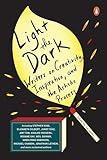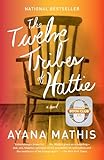On a recent Wednesday afternoon, I managed to vanish unnoticed from my day job in an office in midtown Manhattan and materialize in the lovely little ballpark on Staten Island, where a minor-league affiliate of the New York Yankees was taking on the Lowell Spinners, a Boston Red Sox farm team. Beyond the outfield wall, the Statue of Liberty rose green and glorious out of the harbor and, in the distance, the glass forest of downtown Manhattan shimmered in the afternoon sunshine. The outfield grass sparkled, the foul lines glowed. This was heaven—or at least a major upgrade from my 9-to-5.
The crowd that afternoon was thin. It was, after all, a workday. The box score would claim the attendance was 1,664, which struck me as optimistic, and as I scanned my fellow diehards, I noticed something peculiar: Nearly every fan, myself included, was white. Among the wannabe Yankees and Red Sox down on the field, about half were white and half were Latino. There was only one black player on the field that day.
Maybe I wouldn’t have noticed this imbalance if I hadn’t recently read a column in the New York Times under the headline “With a Loud Ovation, Baseball Shows Its Whiteness.” The column told an unsettling story. During this summer’s All-Star Game in Washington, D.C., it had come to light that one of the participants, a 24-year-old white pitcher with the Milwaukee Brewers named Josh Hader, has a Twitter account laced with ugly statements written when he was 17 and 18, including “White Power, lol” with a clenched-fist emoji, “KKK,” “I hate gay people,” and repeated use of the N-word. Confronted with the tweets immediately after the game, Hader sort of apologized: “I was 17 years old, and as a child I was immature, and obviously I said some things that were inexcusable.”
The Times columnist, Michael Powell, rightly pointed out that no 17-year-old qualifies as a child. Then Powell delivered his kicker: When Hader strode to the pitcher’s mound in Milwaukee in his first appearance after the All-Star Game, thousands of white fans rose to give him a standing ovation. Powell went on to point out some facts that seemed to jibe with what I was seeing in the Staten Island ballpark. Baseball has fewer and fewer black players, few people of color in its executive offices, and it has the oldest and whitest fan base of America’s three major sports. Black and Latino players are routinely excoriated for wearing a cap backward during practice or flipping a bat in celebration after hitting a home run, while a white player receives a standing ovation after making racist and homophobic remarks. “For far too long,” Powell concluded, “too many baseball controversies have centered around older, white baseball men complaining about so-called insults to the game.” And, by extension, too few baseball controversies have centered around insults like Josh Hader’s—and fans’ reaction to them.
The problem, of course, is that so many of those fans are white and, more to the point, so willing to excuse an offense like Hader’s. Powell quotes Curtis Granderson, a gifted black outfielder now with the Toronto Blue Jays, who sees on a daily basis what I saw that Wednesday afternoon in the Staten Island ballpark: “We play this game, me and other black players, counting the black people in the stands who weren’t working at the game. ‘I see one! No, he’s Latino.’ You’re panning, panning, and sometimes it would take us seven innings to count ten.” With the jury stacked like that, what kind of verdict do you expect for infractions, large or small?


 At the time I was learning about Josh Hader, I came upon a book called Light the Dark: Writers on Creativity, Inspiration, and the Artistic Process, which provided unexpected context for my uneasy thoughts about baseball’s whiteness. One of the book’s contributors is Ayana Mathis, author of the acclaimed novel The Twelve Tribes of Hattie. In an essay called “Against Unreality,” Mathis revisits her first encounter with the writing of James Baldwin—the long essay “Down at the Cross: Letter from a Region in My Mind” from Baldwin’s incendiary 1963 masterpiece, The Fire Next Time. Baldwin asserts that the only fact humans have is the fact of death, and that humans should rejoice in the fact of death, should earn their death “by confronting with passion the conundrum of life.” Then, stunningly, he adds: “One is responsible to life: It is the small beacon in that terrifying darkness from which we come and to which we shall return… But white Americans do not believe in death.”
At the time I was learning about Josh Hader, I came upon a book called Light the Dark: Writers on Creativity, Inspiration, and the Artistic Process, which provided unexpected context for my uneasy thoughts about baseball’s whiteness. One of the book’s contributors is Ayana Mathis, author of the acclaimed novel The Twelve Tribes of Hattie. In an essay called “Against Unreality,” Mathis revisits her first encounter with the writing of James Baldwin—the long essay “Down at the Cross: Letter from a Region in My Mind” from Baldwin’s incendiary 1963 masterpiece, The Fire Next Time. Baldwin asserts that the only fact humans have is the fact of death, and that humans should rejoice in the fact of death, should earn their death “by confronting with passion the conundrum of life.” Then, stunningly, he adds: “One is responsible to life: It is the small beacon in that terrifying darkness from which we come and to which we shall return… But white Americans do not believe in death.”
Mathis points out that Baldwin is using white America’s denial of death as a metaphor for a larger and more complex denial: “the denial of reality, racial and otherwise.” And this denial leads to deaths of an even worse sort than physical death because these deaths continue to afflict the living: “political death, spiritual death, psychic death.” This larger denial, Mathis posits, leaves white America prone to nostalgia, which I define as the misguided yearning for a time that never existed. We’ve come, unexpectedly, back to baseball. “The country is prey to nostalgia,” Mathis writes, “which is the ultimate, backward-looking unreality. And also prey to a kind of preservation of a status quo that is also based on a fantasy of the past: a moment in time in which you could keep your factory job forever, pull yourself up by your bootstraps, and life was all baseball and Cracker Jacks. Well, that was never the reality of America, certainly never for all Americans. But we move forward, politically and psychically, as though that nostalgic reality was in fact real.”
Yes, that’s precisely how we move forward. This was brought home to me during the seventh-inning stretch at the ballgame on Staten Island. After the fans stood and belted out that harmless bit of doggerel, “Take Me Out to the Ballgame,” the announcer asked everyone to remain standing and remove their hats. Everyone, players included, turned toward center field, where an image of Old Glory started fluttering on the Jumbotron above the outfield wall. Suddenly we were being bombarded by that blast of jingoism, Kate Smith’s rendition of “God Bless America.” This sent me over the edge. I left my hat on and bolted for the nearest beer stand and stayed gone until the game had resumed. I couldn’t stop the nonsense, but at least I could refuse to participate in it.
As I rode the ferry back across the harbor after the game, I performed an autopsy on my day, which had begun in high spirits and ended in something close to despair. It occurred to me that it was inevitable—and almost too easy—to see the day in the context of our national moment. The standing ovation for Josh Hader comes at a time when the president of the United States refuses to condemn murderous white nationalists—and urges the owners of NFL football teams to fire any player who kneels during the playing of the national anthem to protest police killings of unarmed black people. That president has declared that poverty no longer exists in America. The millions who lap up his exhortation to Make America Great Again are the people who yearn to preserve a status quo that is based on a fantasy that never existed, a time when “life was all baseball and Cracker Jacks.” I have loved the game of baseball all my life, and still do. I object to the uses the game is now being put to—as booster of patriotism, as a smokescreen for “traditionalists” to treat people unequally, as a safe haven for abhorrent behavior. Meanwhile, beyond the outfield wall, the rich get richer and the poor get poorer and the nation is mired in the two longest wars in its history.
So this is what we as a nation have come to, I told myself as the boat slid past the Statue of Liberty: a nation lost in dreamtime. James Baldwin and Ayana Mathis nailed it. Nostalgia is the ultimate unreality, and yes: The nostalgia-drenched game of baseball is definitely a symptom of what’s wrong with America. But it’s just the beginning of a much larger story.
Image: Flickr/Andrew Malone









